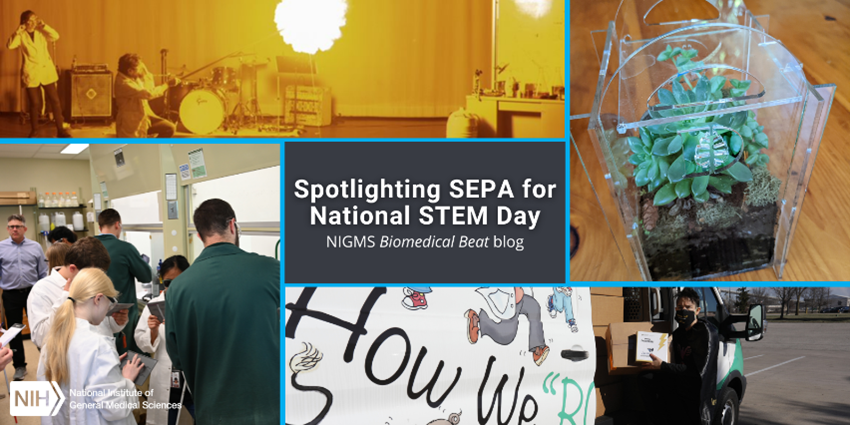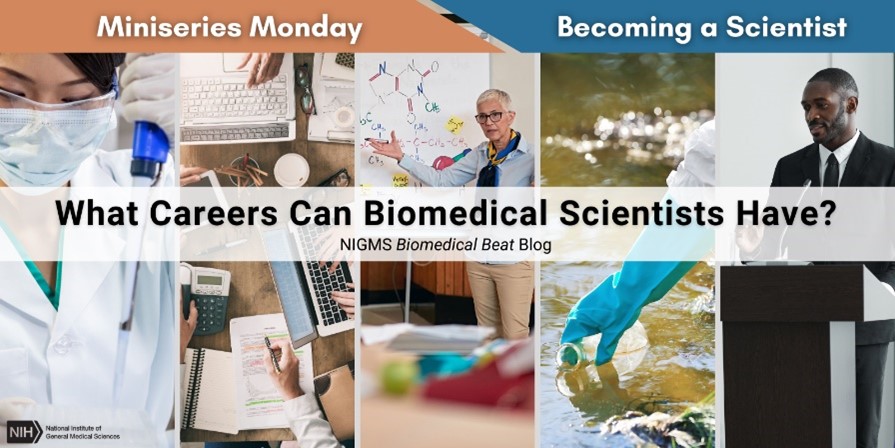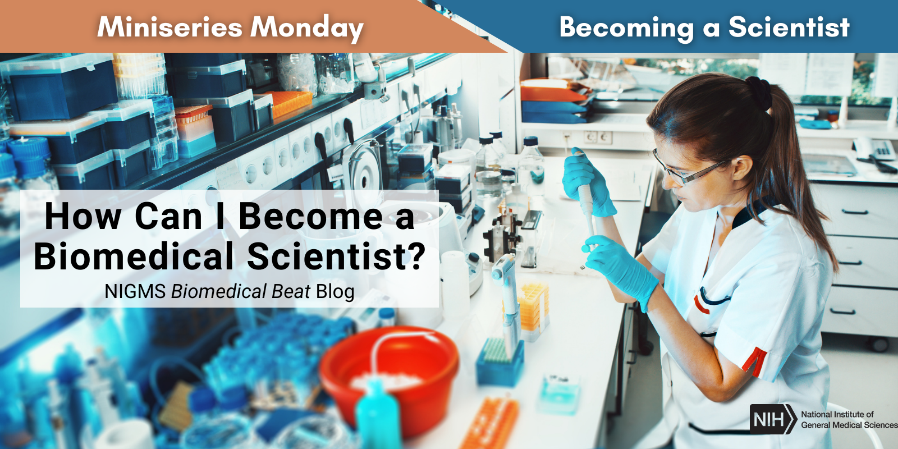The NIGMS Science Education Partnership Award (SEPA) program provides opportunities for pre-K-12 students from underserved communities to access STEM educational resources. SEPA grants support innovative, research-based, science education programs, furthering NIGMS’ mission to ensure a strong and diverse biomedical research workforce. SEPA projects generate resources that are mapped to state and national teaching standards for STEM and are rigorously evaluated for effectiveness; most are also available at no cost. These resources include mobile laboratories, interactive health exhibits in museums and science centers, educational resources for students, and professional development for teachers. Projects engage students and encourage them to envision themselves having careers in biomedical research.
To celebrate National STEM Day, we’re taking a look back at some of the SEPA projects we’ve recently featured on the blog, as well as our STEM teaching resources website, which includes several SEPA-funded materials. Check out the snapshots of each of the projects with links to the full articles and the teaching website below.
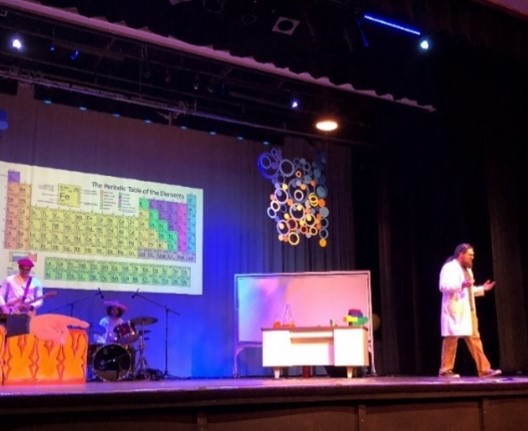 Dr. Matt Queen, a co-leader of ACES, on stage interviewing a college student as part of the Atomic Circus stage show. Credit: Matt Queen.
Dr. Matt Queen, a co-leader of ACES, on stage interviewing a college student as part of the Atomic Circus stage show. Credit: Matt Queen.
Chemistry Under the Big Top
The Authentic Community Engagement in Science (ACES) project aims to get grade 5 students in eastern Montana excited about STEM. It starts with a curriculum that explores life from the macro to the atomic level and culminates in the Atomic Circus, a stage show about chemistry with dancers, music, and scientific demonstrations. ACES’ goal is to demonstrate to students how relevant and important STEM is to their communities.
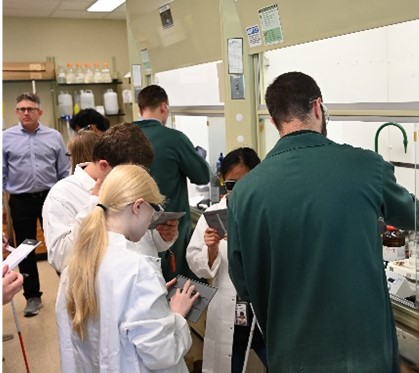 Dr. Shaw (back left) observes SEPA program students engaging with tactile graphics in his lab. Credit: Jordan Koone.
Dr. Shaw (back left) observes SEPA program students engaging with tactile graphics in his lab. Credit: Jordan Koone.
Students With Visual Impairments Empowered to Explore Chemistry Through SEPA Project
Students with blindness and low vision are often excluded from chemistry labs and offered few accessible representations of the subject’s imagery, which can significantly hinder their ability to learn about and participate in chemistry. Bryan Shaw, Ph.D., a professor of chemistry and biochemistry at Baylor University in Waco, Texas, hopes to change that. He leads a SEPA project that introduces high schoolers with blindness and low vision to the world of chemistry and scientific careers. The program makes the richness of chemistry accessible to students through a variety of resources and techniques, and it enables them to meet and engage with scientists with blindness.
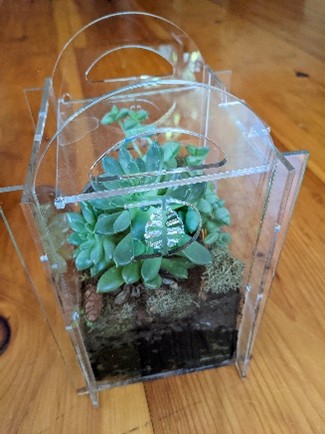 A completed terrarium. Credit: Vicki V. May, Ph.D.
A completed terrarium. Credit: Vicki V. May, Ph.D.
Sparking Rural Students’ Interest in STEM
The Dartmouth Rural STEM Educator Partnership works with under-resourced middle schools to develop hands-on projects that get students excited about STEM, including a terrarium project. Students were able to design experiments around plant growth, using tools they controlled through computer coding to collect data and determine if it supported or refuted their hypotheses. Additionally, the partnership’s graduate-student mentors visited classes to share their scientific journeys and talk with students about how they, too, can become scientists.
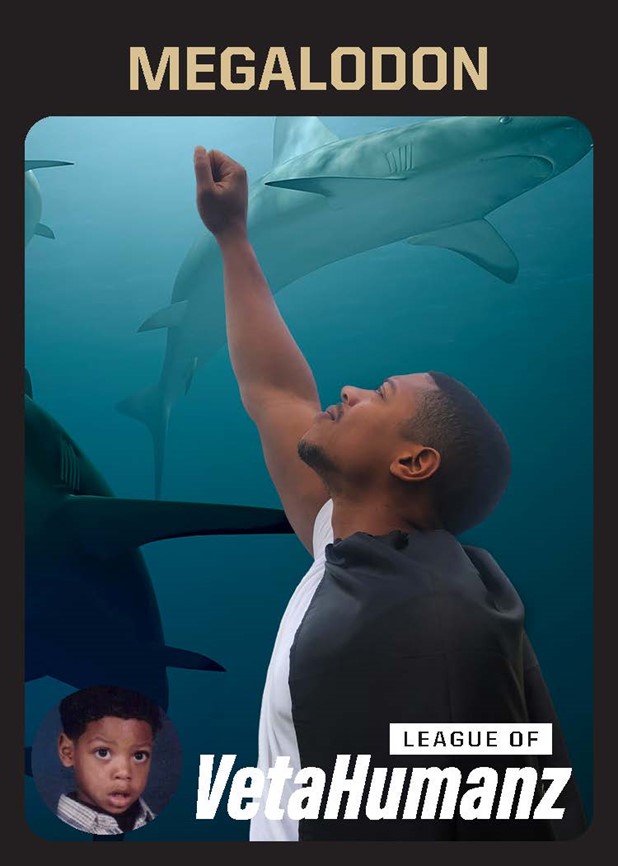 Collectible card for Megalodon, alter ego of Vacques Hines, D.V.M. Credit: Courtesy of Dr. San Miguel, with design by Allison Gardner.
Collectible card for Megalodon, alter ego of Vacques Hines, D.V.M. Credit: Courtesy of Dr. San Miguel, with design by Allison Gardner.
The League of VetaHumanz: Encouraging Kids to Use Their Powers for Good!
The League of VetaHumanz is a superhero league for veterinarian role models with the goal of diversifying the veterinary profession. Teams of role models partner with local schools or community centers that support under-resourced elementary school students. They build relationships with the kids and organizations as they deliver veterinary-based STEM activities. Through the league’s “See Us, Be Us” model, the students see VetaHumanz who look like them, and they start to realize that becoming a veterinarian is a possibility.
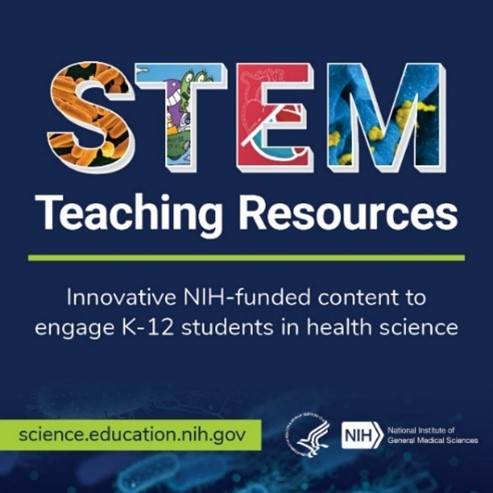 Credit: NIGMS.
Credit: NIGMS.
NIH-Wide Resource for K-12 Educators
To help educators find free science education content, we launched a STEM resources website covering a wide range of health and biomedical research topics for students in grades K through 12. The site provides links to great content from various institutes and centers within the National Institutes of Health (NIH), as well as resources developed under SEPA projects. Materials are categorized by different health and research topic areas, and we’ve recently added an “Other Resources” tab where teachers can find tools beyond the curriculum materials, like our Educator’s Corner, Kahoot! quizzes, and resources from other federal partners.


